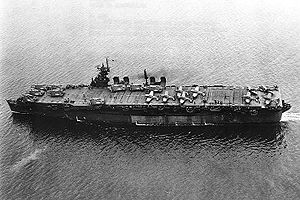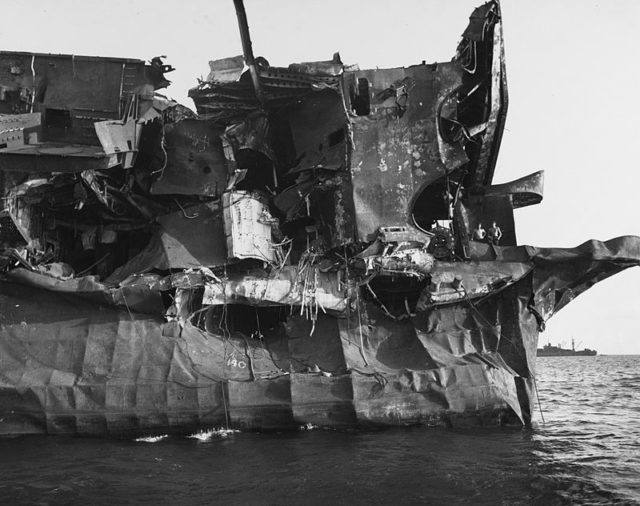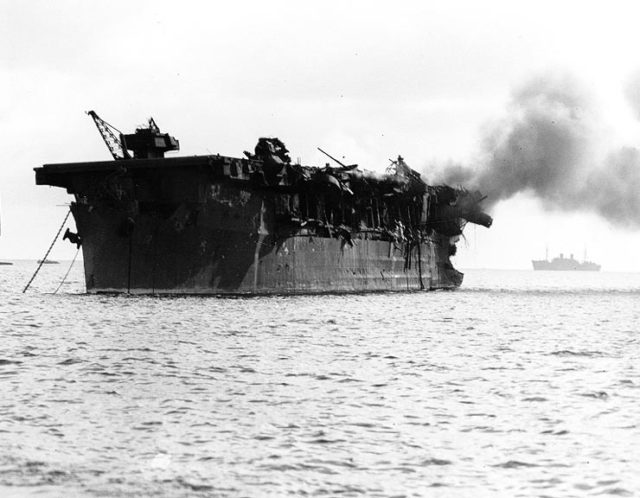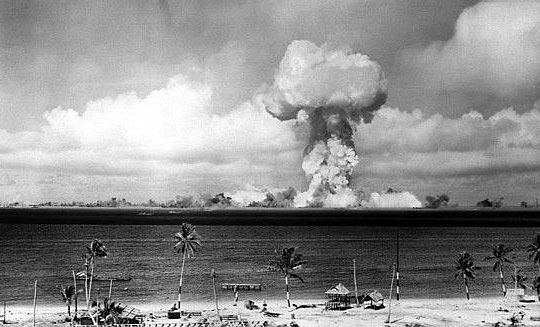Newly declassified photographs show the USS Independence, one of the nearly one hundred ships that were used as targets in the Bikini Atoll atomic bomb testing.
It was an old World War II aircraft carrier that in July 1946 became part of “Operation Crossroads,” two Bikini Atoll atomic tests. Such testing was the aftermath of the use of atomic bombs that ended World War II, and a project that introduced a new era in world history.

In the previously-classified report, it was summarized that “the Bomb” made it possible to depopulate the Earth, leaving only remnants of mankind’s occupation. A whole issue of the Journal of Maritime Archaeology was used to show the collection of documentation and photographs.

Test Able was the first of 67 tests at the Atoll and the second US nuclear test, which thousands followed. The fission bomb, similar to the one dropped on Nagasaki, was exploded 158 meters above sea level over Bikini Atoll and had a payload of 23 kilotons. The purpose of these tests was to see how a nuclear bomb would affect ships. So a fleet of 78 vessels, some that had been captured in World War II, were anchored in the lagoon. The blast of that 23 kiloton bomb only sunk five of the ships and left another 14 seriously damaged.
The USS Independence was scuttled by the US Navy when in 1951 was deemed as no longer useful nuclear testing platform. This was supposed to prevent it from falling into Soviet hands. When the ship was scuttled, there were 55-gallon drums filled with radioactive waste. The ship ended up misplaced somewhere on the ocean bottom for a while.

The wreck was found by the NOAA (National Oceanic & Atmospheric Administration) Office of Ocean Exploration and Research and the Office of National Marine Sanctuaries, which worked with the Boeing Company in 2015 to find the wreck. Understandably, there were concerns raised about the level of radiation coming from the wreckage. Marine archaeologists wanted to explore the wreck, and their safety was paramount.
The scientists contacted Professor Vetter from the applied nuclear physics department at Berkeley Lab. He believes that there will be no danger for the submersible or the crew that will be down in the depths. Water is considered a very effective radiation shield – the radiation would only extend a few inches from the shipwreck. Even with rust particles coming off the ship, the ocean will dilute any effects, and the effects on the food chain from sea life communicating with the ship are also very tiny, Mail Online reported.

When studying the wreck, the scientists used an 18.5-foot long underwater vehicle called Echo Ranger from the Boeing Company. They found out that the ship was 792 meters off the coast of the Farallon Islands and it is still intact, with the flight decks and hull visible. They could also see what they thought was a plane inside the hangar bay. It’s been sitting on the seabed for 64 years now, and it is the deepest shipwreck of the 300 that lie in the waters off San Francisco.
Here is another story from us: The Black Sea’s 40+ shipwrecks discovered during survey of her seabed
Scientists are hoping to be able to get another submersible to get closer to the ship, but before that happens, they would like a radiation detector to be specially built so that the crew can stay safe. Dr. Vetter would like to examine the hull closer and see if any of the barrels can be seen; he also would like to collect information about the radiation leaking from the ship.
